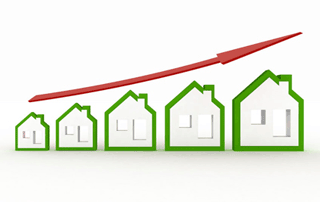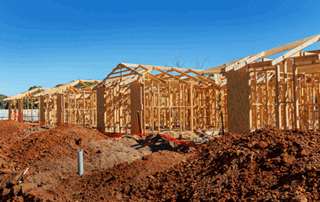Quote of the Week
“The moral of the story is don’t panic. Property has shown its resilience through economic shocks before and we have no reason to expect it won’t do so again.”
Peter Koulizos, Chairman, Property Investment Professionals of Australia
House Gains Likely Over 2 years
 House prices will rise in markets across Australis over the next two years, says leading real estate research analyst Simon Pressley, managing director of Propertyology.
House prices will rise in markets across Australis over the next two years, says leading real estate research analyst Simon Pressley, managing director of Propertyology.
Supply, which was already low before Covid-19 hit, is falling while demand is steady, he reasons.
The market remains favourable given the low mortgage rates, support for first-home buyers, and “sensible” credit policies, he says.
“Savvy property investors understand three to six months of disruption is minor in the overall scheme of property ownership,” Pressley says. “If anything, it creates a small window of opportunity. After all, they are investing in the essential commodity of shelter.
“I think the locations with the better property market outlooks are among select regional cities that offer a combination of sub $500,000 median house prices, a diverse local economy, nominal price growth during the last decade, and where the housing supply pipeline is contained.” He adds that it is crucial to understand that the influence of population growth on property prices is “grossly overstated”.
Prices Rise After Recessions: PIPA
 New research by the Property Investment Professionals of Australia (PIPA) has found that house prices increased up to 100% in the five years after the most recent recessions from 1973 to the GFC in 2008.
New research by the Property Investment Professionals of Australia (PIPA) has found that house prices increased up to 100% in the five years after the most recent recessions from 1973 to the GFC in 2008.
PIPA chairman Peter Koulizos says looking back over the past 50 years, house prices were higher five years after each recession or downturn.
“The research shows that talk of impending property ‘doom’ has never happened in recent history – and those recessions or downturns lasted multiple years rather than a few months,” he says.
Five years after the recession of 1973–1975, Sydney median house prices had increased 101%, followed by Perth and then Brisbane, the PIPA research found.
The results were similar in the 1982–83 recession and the ‘recession we had to have’ in the 1990s.
Koulizos says that over the three most recent economic downturns, there were periods of annual house price falls in many capital cities, but the price reductions were never sustained or prolonged.
House Listings on the Rise
 A detailed analysis by CoreLogic suggests listings of homes for sale are set to rise in the coming weeks, after pre-listing activity rose 11% in the week ending May 10.
A detailed analysis by CoreLogic suggests listings of homes for sale are set to rise in the coming weeks, after pre-listing activity rose 11% in the week ending May 10.
CoreLogic’s research analyst Eliza Owen says, “With restrictions on open inspections and auctions being gradually lifted, agents may find they have capacity to take on more listings.
“Even though consumer sentiment is relatively low, it has bounced back significantly over the past few weeks, with May results of consumer sentiment regaining 80% of what was lost in the index over March.
“For now, it would seem that people are more confident in selling property.”
In the past week, the number of newly-listed homes rose 12% while mortgage activity rose by 3% compared to the previous week, a further sign of improving sentiment, says Owen.
“This shows that confidence is returning to market off the back of eased social distancing restrictions, and government policies which have helped to soften the blow of a negative shock to demand.”
Consumer Sentiment Rebounds
 The Westpac-Melbourne Institute consumer sentiment index shows sentiment among buyers rebounded in May, rising by 32% and reversing most of April’s 27% drop.
The Westpac-Melbourne Institute consumer sentiment index shows sentiment among buyers rebounded in May, rising by 32% and reversing most of April’s 27% drop.
Reassuringly, the Index is now only 8% below its average level for the period September–February before governments imposed any restrictions. The rebound was across all states, led by Western Australia which is up by 68%.
Consumer expectations for house prices rose 5% – a dramatic turnaround from the large drop of 50% in April. Victoria bucked the modest rebound with consumers expecting a price drop of 12%.
“It is extremely noteworthy that in the midst of this exuberant rebound in confidence, prospects for house prices have hardly budged,” says Westpac’s chief economist Bill Evans. “The Melbourne housing market looks vulnerable to the sudden slowdown in foreign student and migrant inflows and has already seen some early price slippage. The situation clearly bears watching closely.”The rising positive sentiment is a reflection of eased social distancing measures, supported by government stimulus measures.
Developers Report Rising Inquiry
 Two of the country’s largest residential developers, Stockland and Frasers, say interest in their housing developments is returning following a downturn in March.
Two of the country’s largest residential developers, Stockland and Frasers, say interest in their housing developments is returning following a downturn in March.
By the end of April, enquiries for Stockland residential properties were almost back to the same level as pre-coronavirus in February.
Stockland says an under-supply was already emerging, as activity levels among private developers had fallen.
According to Stockland chief executive Mark Steinert, low interest rates and fiscal stimulus, as well as containment of the virus, mean the Australian economy is well placed for recovery.
Stockland settlements were completing in a similar time as they did pre-crisis, with default rates bumping up to about 4%, just above long-term averages.
Frasers Property Australia has about 1600 residential units due for settlement in the second half of the 2020 fiscal year and chief executive Rod Fehring said inquiry levels had been lifting before the crisis struck.
Fehring said that the current situation was clearer than during the global financial crisis.




